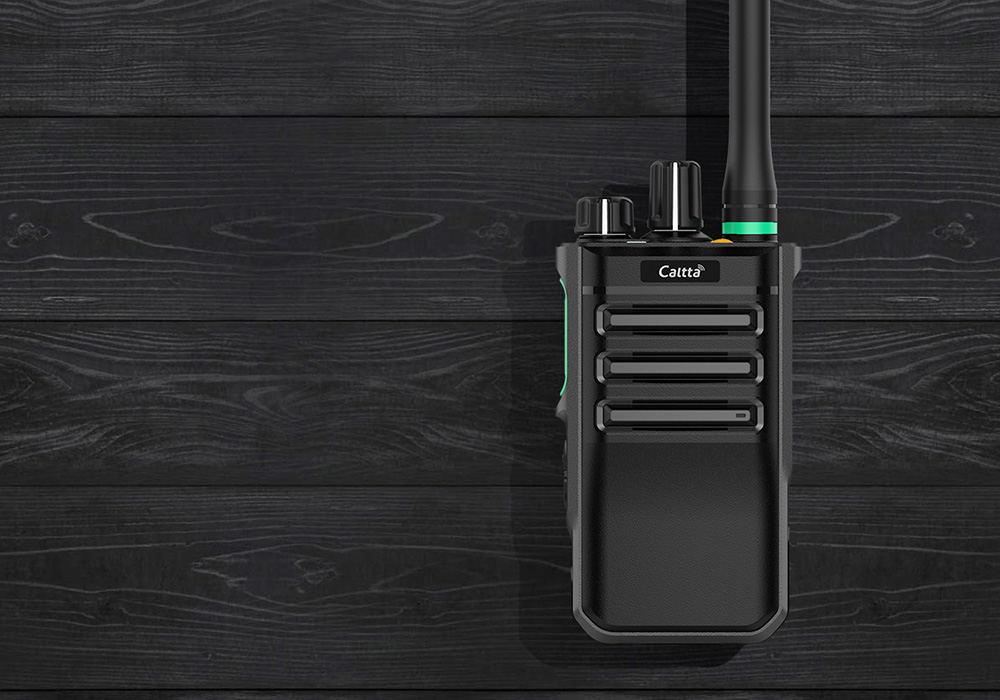What is DMR Tier 2 on Caltta Two-Way Radio?
DMR Tier 2 standard Two-Way Radios are designed as a cost-effective digital replacement for conventional analogue two-way radio systems. It was also developed as an affordable digital alternative to PMR, TETRA or P25.
DMR Tier 2 uses a 2 slot TDMA with 4FSK modulation compared to FDMA with FM modulation for analogue. DMR TDMA divides a 12.5 kHz channel into two independent time slots. DMR Tier 2 operates in the VHF and UHF PMR or LMR frequency bands covering 66-960 MHz.

Coverage and why capacity matters
DMR Tier 2 provides small localised coverage or if needed, a regional-based wide area coverage. DMR Tier 2 is based not so much on coverage, as on capacity. “How many other Two-Way Radio users will be on the network?” is the essential question.
DMR Tier 2 conventional systems are usually configured for up to 80 users, and can also be loaded with more than 100 (depending on traffic). As a result, this makes DMR Tier 2 the ideal communications solution for small to medium-sized organisations and businesses that are primarily looking for voice-centric services (basic data services such as text messaging are also supported).
Caltta Radio offers a varied range of hand-held radio terminals for DMR Tier 2. The PH600, PH660 & PH690
Analogue to digital migration
Organisations that currently use conventional analogue radio will find it very easy to migrate to digital using DMR. The two-slot TDMA technology means that for every one existing analogue 12.5 kHz system you get two equivalent talk channels using the new DMR 12.5 kHz channel. DMR Tier 2 instantly doubles your capacity.
Other services
DMR Tier 2 supports a range of voice services including: individual calls/private calls, group calls, all call and broadcast calls.
Additional voice services include: open voice channel mode (enables third party users to listen in and participate in existing calls); unaddressed voice calls; later entry (allows latecomers to join a call); and talking party identification (displays radio ID to other radio terminals).
Data services use the Packet Data Protocol (PDP), which supports Internet Protocol (IP) or Short Data Service (SDS) data services. The DMR IP standard supports both IPv4 and IPv6. SDS messages can be up to between 626 and 1,130 bytes long depending on the mode and protection rate (source: DMR Association).


Leave A Comment
You must be logged in to post a comment.